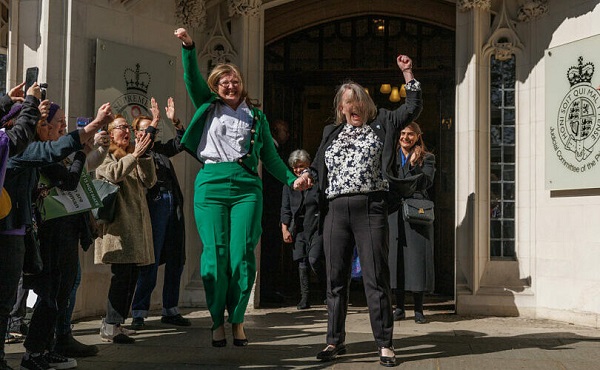Alberta
39 percent increase in funding for RCMP instigates discussion about future policing for rural Alberta

Alberta’s government will pay the 39% increase for one year and will begin engagement with smaller communities on their policing needs for the future.
Alberta’s government is temporarily freezing the amount rural municipalities are responsible for paying for front-line policing services in Alberta.
The province is responsible for providing policing services to municipal districts, counties and urban municipalities with populations less than 5,000. In response to rising rural crime, Alberta’s government announced increased funding for RCMP services in 2019 which helped create hundreds of additional RCMP positions across the province.
When these changes came into effect in 2020, the province also worked with Alberta Municipalities and Rural Municipalities of Alberta to create a shared funding model through the Police Funding Regulation. Now, due to higher costs from recent RCMP collective agreements, the cost for policing in these smaller communities will increase by 39 per cent, with no corresponding increase in the services provided. To assist municipalities with these new costs, Alberta’s government will pay the increase for one year and will begin engagement with them on their policing needs for the future.
“The expiring regulation would have municipalities seeing a 39 per cent increase in their costs – with no improvement in policing services delivered. We know this is not acceptable for many municipalities. This cost freeze will give rural municipalities the stability and predictability they need, and it will allow for meaningful engagement between the province and municipalities on equitable support.”
“Alberta’s government understands that such an increase in costs for service will be a challenge to our rural municipalities. With the costs frozen for a year, we look forward to a comprehensive review of the police funding model with our municipal partners. During our review, we will carefully consider all factors to ensure we provide an updated funding model that is sustainable.”
Municipalities are preparing their budgets for 2025, and those served by the RCMP under the Provincial Police Service Agreement can continue to expect the same level of service without the additional costs for one year. While these costs are shared between municipalities and the province, the province will pay a higher proportion of the costs next fiscal year, a total of $27 million, so that municipalities’ costs remain stable while they determine how to cover the increases on a forward basis and what the best model of policing is for their community.
The Police Funding Regulation introduced in 2020 was phased in over several years, with rural municipalities paying an increasing share of their policing costs each year for four years. Municipalities have been paying 30 per cent of front-line policing costs since fiscal year 2023-24. By sharing costs, the province has been able to afford the addition of many new RCMP police officers, programs and services over the past several years.
The Police Funding Regulation has been in place for almost five years, and with the significant cost increases coming from the federal government, the province will undertake a review to determine what improvements may be needed. While the regulation was originally supposed to expire March 31, 2025, Alberta’s government has extended it by one year to March 31, 2026, which will enable the province and municipalities to have fulsome conversations about future policing needs and models. More details about the comprehensive review and engagement opportunities for rural municipalities will be released shortly.
Quick Facts:
- The Police Funding Regulation brought in a new funding model, which was phased in over several years, with rural municipalities paying an increasing share of their policing costs each year, reaching the intended 30 per cent in 2023.
- They were charged 10 per cent starting April 1, 2020. This increased to 15 per cent one year later, 20 per cent the following year and finally 30 per cent starting April 1, 2023.
- The initial funding model was based on 2018 costs to provide certainty and stability to municipalities.
- After 2024-25, the municipal share will be required to be based on current policing costs, resulting in a proposed 39 per cent increase in costs for municipalities.
- The Police Funding Model enabled a $235.4-million investment in policing over five years, adding 285 regular members and 244 civilian positions to enhance rural policing.
Alberta
CPP another example of Albertans’ outsized contribution to Canada

From the Fraser Institute
By Tegan Hill
Amid the economic uncertainty fuelled by Trump’s trade war, its perhaps more important than ever to understand Alberta’s crucial role in the federation and its outsized contribution to programs such as the Canada Pension Plan (CPP).
From 1981 to 2022, Albertan’s net contribution to the CPP—meaning the amount Albertans paid into the program over and above what retirees in Alberta received in CPP payments—was $53.6 billion. In 2022 (the latest year of available data), Albertans’ net contribution to the CPP was $3.0 billion.
During that same period (1981 to 2022), British Columbia was the only other province where residents paid more into the CPP than retirees received in benefits—and Alberta’s contribution was six times greater than B.C.’s contribution. Put differently, residents in seven out of the nine provinces that participate in the CPP (Quebec has its own plan) receive more back in benefits than they contribute to the program.
Albertans pay an outsized contribution to federal and national programs, including the CPP because of the province’s relatively high rates of employment, higher average incomes and younger population (i.e. more workers pay into the CPP and less retirees take from it).
Put simply, Albertan workers have been helping fund the retirement of Canadians from coast to coast for decades, and without Alberta, the CPP would look much different.
How different?
If Alberta withdrew from the CPP and established its own standalone provincial pension plan, Alberta workers would receive the same retirement benefits but at a lower cost (i.e. lower CPP contribution rate deducted from our paycheques) than other Canadians, while the contribution rate—essentially the CPP tax rate—to fund the program would likely need to increase for the rest of the country to maintain the same benefits.
And given current demographic projections, immigration patterns and Alberta’s long history of leading the provinces in economic growth, Albertan workers will likely continue to pay more into the CPP than Albertan retirees get back from it.
Therefore, considering Alberta’s crucial role in national programs, the next federal government—whoever that may be—should undo and prevent policies that negatively impact the province and Albertans ability to contribute to Canada. Think of Bill C-69 (which imposes complex, uncertain and onerous review requirements on major energy projects), Bill C-48 (which bans large oil tankers off B.C.’s northern coast and limits access to Asian markets), an arbitrary cap on oil and gas emissions, numerous other “net-zero” targets, and so on.
Canada faces serious economic challenges, including a trade war with the United States. In times like this, it’s important to remember Alberta’s crucial role in the federation and the outsized contributions of Alberta workers to the wellbeing of Canadians across the country.
Alberta
Made in Alberta! Province makes it easier to support local products with Buy Local program

Show your Alberta side. Buy Local. |
When the going gets tough, Albertans stick together. That’s why Alberta’s government is launching a new campaign to benefit hard-working Albertans.
Global uncertainty is threatening the livelihoods of hard-working Alberta farmers, ranchers, processors and their families. The ‘Buy Local’ campaign, recently launched by Alberta’s government, encourages consumers to eat, drink and buy local to show our unified support for the province’s agriculture and food industry.
The government’s ‘Buy Local’ campaign encourages consumers to buy products from Alberta’s hard-working farmers, ranchers and food processors that produce safe, nutritious food for Albertans, Canadians and the world.
“It’s time to let these hard-working Albertans know we have their back. Now, more than ever, we need to shop local and buy made-in-Alberta products. The next time you are grocery shopping or go out for dinner or a drink with your friends or family, support local to demonstrate your Alberta pride. We are pleased tariffs don’t impact the ag industry right now and will keep advocating for our ag industry.”
Alberta’s government supports consumer choice. We are providing tools to help folks easily identify Alberta- and Canadian-made foods and products. Choosing local products keeps Albertans’ hard-earned dollars in our province. Whether it is farm-fresh vegetables, potatoes, honey, craft beer, frozen food or our world-renowned beef, Alberta has an abundance of fresh foods produced right on our doorstep.
Quick facts
- This summer, Albertans can support local at more than 150 farmers’ markets across the province and meet the folks who make, bake and grow our food.
- In March 2023, the Alberta government launched the ‘Made in Alberta’ voluntary food and beverage labelling program to support local agriculture and food sectors.
- Through direct connections with processors, the program has created the momentum to continue expanding consumer awareness about the ‘Made in Alberta’ label to help shoppers quickly identify foods and beverages produced in our province.
- Made in Alberta product catalogue website
Related information
-

 International2 days ago
International2 days agoPope Francis has died aged 88
-

 International2 days ago
International2 days agoJD Vance was one of the last people to meet Pope Francis
-

 2025 Federal Election1 day ago
2025 Federal Election1 day agoOttawa Confirms China interfering with 2025 federal election: Beijing Seeks to Block Joe Tay’s Election
-

 COVID-191 day ago
COVID-191 day agoNearly Half of “COVID-19 Deaths” Were Not Due to COVID-19 – Scientific Reports Journal
-

 2025 Federal Election1 day ago
2025 Federal Election1 day agoHow Canada’s Mainstream Media Lost the Public Trust
-

 Business2 days ago
Business2 days agoCanada Urgently Needs A Watchdog For Government Waste
-

 2025 Federal Election16 hours ago
2025 Federal Election16 hours agoBREAKING: THE FEDERAL BRIEF THAT SHOULD SINK CARNEY
-

 International2 days ago
International2 days agoPope Francis Dies on Day after Easter






